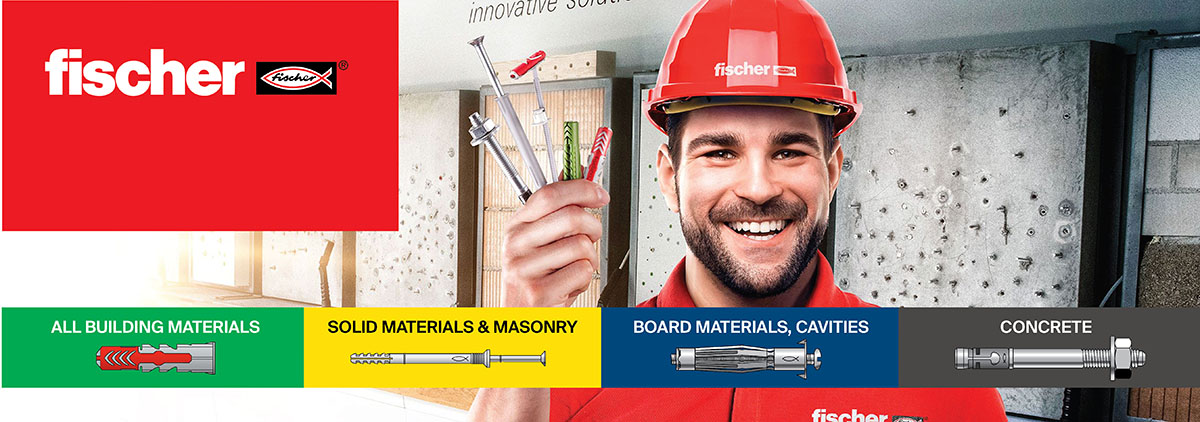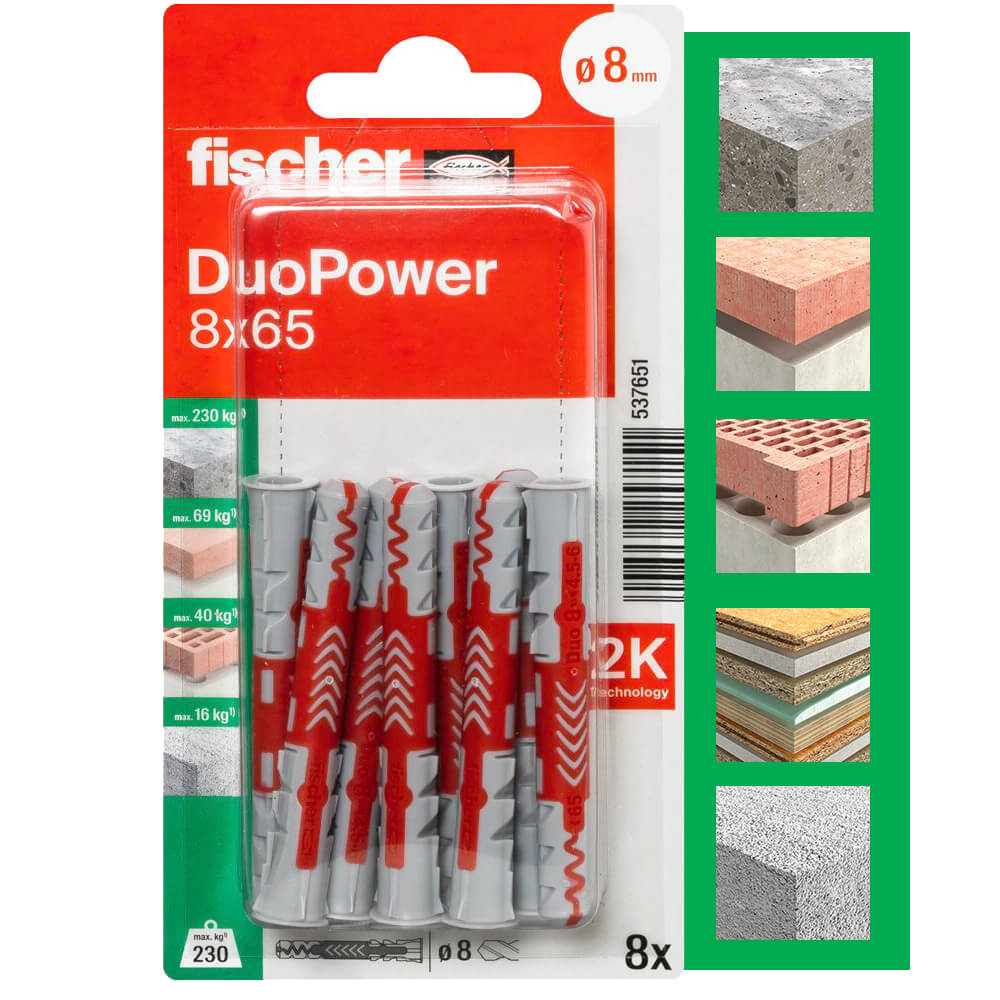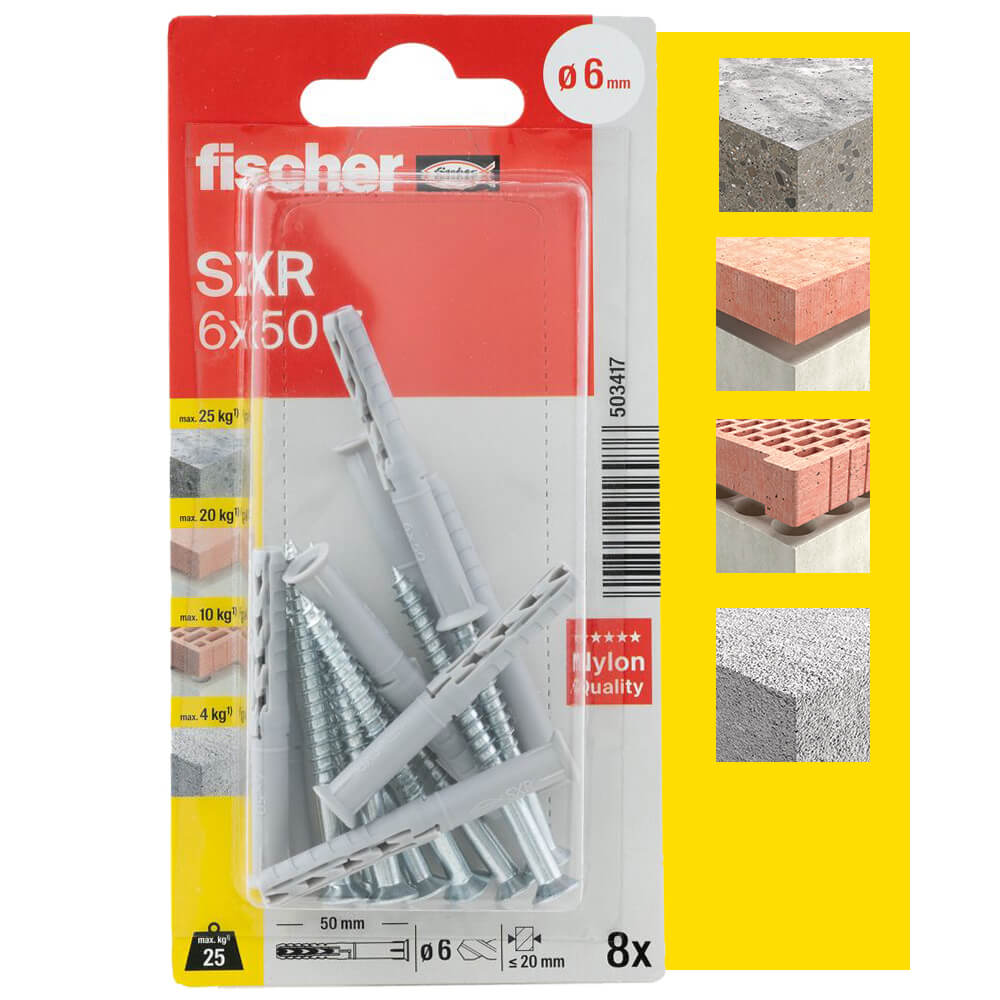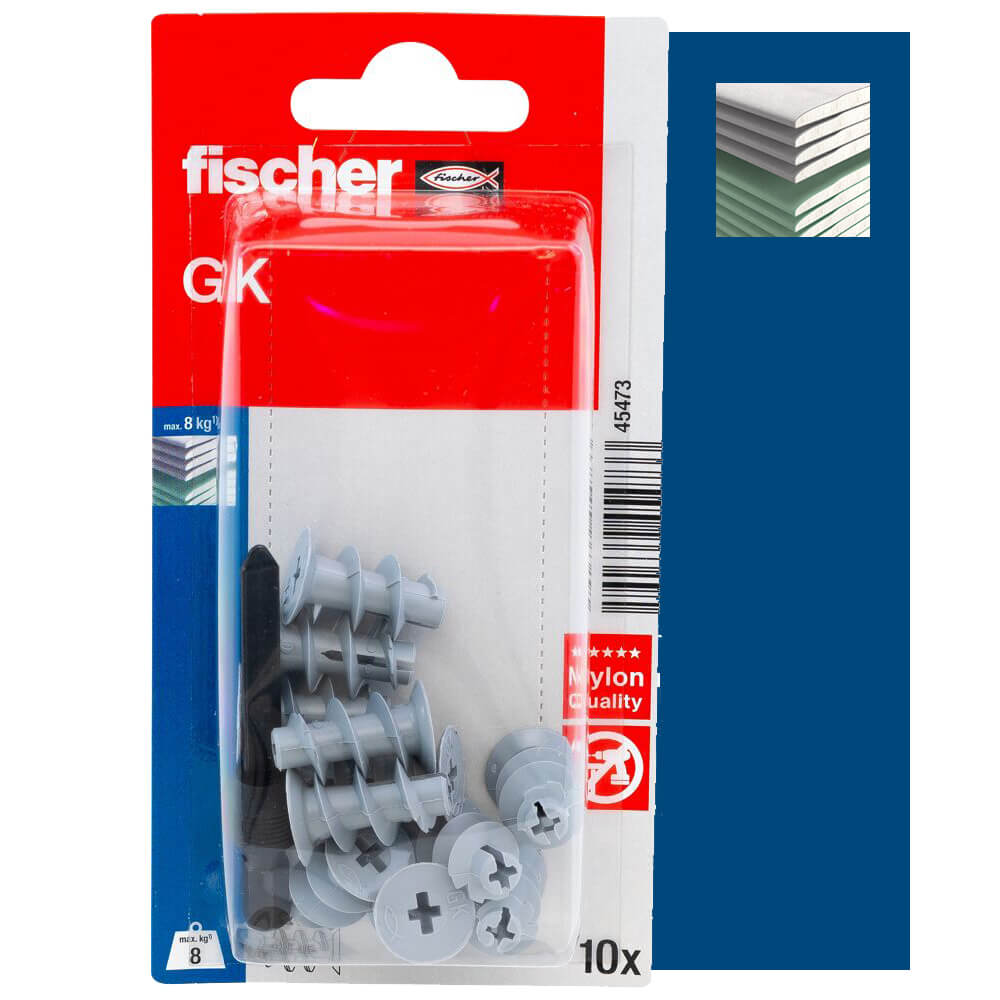fischer Colour-Coded Fixing Guide
Selecting the Right Fixings for Your Building Material
When it comes to fixing objects to various building materials, one of the critical factors to consider is the type of material you’re dealing with. Different building materials require different types of fixings to ensure a secure and reliable installation that will stand the test of time. fischer, a trusted name in the world of fixings, has made this process easier by introducing a colour-coding system for their fixings, indicating which materials a given fixing is suitable for use in. In this guide, we will explore the fischer colour-coded fixing system and provide valuable insights on selecting the right fixings when working with various building materials and applications.
1. Understanding The Importance of Building Materials:
The security of any installation depends on two factors – firstly knowing what building materials you will be fixing into and secondly choosing the correct type of fixing best suited for installing into the given building material. This is why it’s important to understand that different building materials require different fixing technologies to ensure a secure installation. As a global leader in fixing and fastening technology fischer anchors have been specifically designed and tested for optimal performance across a range of various building materials. The different substrates can be broadly categorized into the following groups:
1.1 Concrete:

Standard concrete

Aerated/Lightweight concrete
1.2 Masonry Materials:

Solid Bricks with dense structures

Perforated bricks with dense structures

Solid bricks with porous structures

Perforated bricks with porous structures

Hollow core cinder blocks
1.3 Board Materials:

Boards with Soft Structures (Gypsum)

Boards with Solid Structures (Fiber Cement)
2. Understand fischer’s Colour-Coded Fixings:
fischer has simplified the process of choosing the right fixings by assigning different colours to their products based on the building materials they are designed for fixing into.
Here’s a breakdown of the colour code system:
Green – Suitable for All Building Materials
In cases where you cannot definitively identify the building material, green-coded fixings are a versatile choice and should work in a variety of different substrates. The DuoPower Nylon Plug, for example, works effectively in any building material, including challenging surfaces like hollow cinder blocks, aerated concrete, and drywalling. In South Africa many garages/workshops are made from hollow cinder blocks, the DuoPower with the appropriately sized screw is a great all-round solution to keep on hand for when fixings are required.
Yellow – Suitable for Solid Building Materials
Fixing objects into solid building materials is generally straightforward. fischer offers a wide range of fixings suitable for these materials. The SXR Nylon Frame Anchor, available in various diameters and lengths, is a popular choice for a wide range of applications. The SXR only requires a 50mm embedment depth into solid building materials, this makes it particularly useful when you want to fix thick materials onto the substrate or if a substrate has a thick plaster or screed layer and you do not want the expansion to take place in the plaster/screed layer, but only in the substrate. An application where one would need to consider both a thick material and a plastered wall would be fixing a kitchen cabinet onto a plastered solid brick wall with a French cleat.
Blue – Suitable for Board Materials and Cavities
When working with walls and ceilings made from board materials, specific fixings are necessary. fischer provides a range of both nylon and metal fixings to meet these requirements. The GK Plasterboard Fixing, a preferred choice among DIY enthusiasts and professionals, is particularly effective. Keep in mind that when fixing into board materials, the strength of the board itself is a limiting factor. The GK is perfect for fixing lightweight light fixtures to either ceiling boards or drywalling, a light fixture will have multiple fixing points and by distributing the load across those fixing points, the board material will easily handle the load.
Grey – Suitable for Concrete
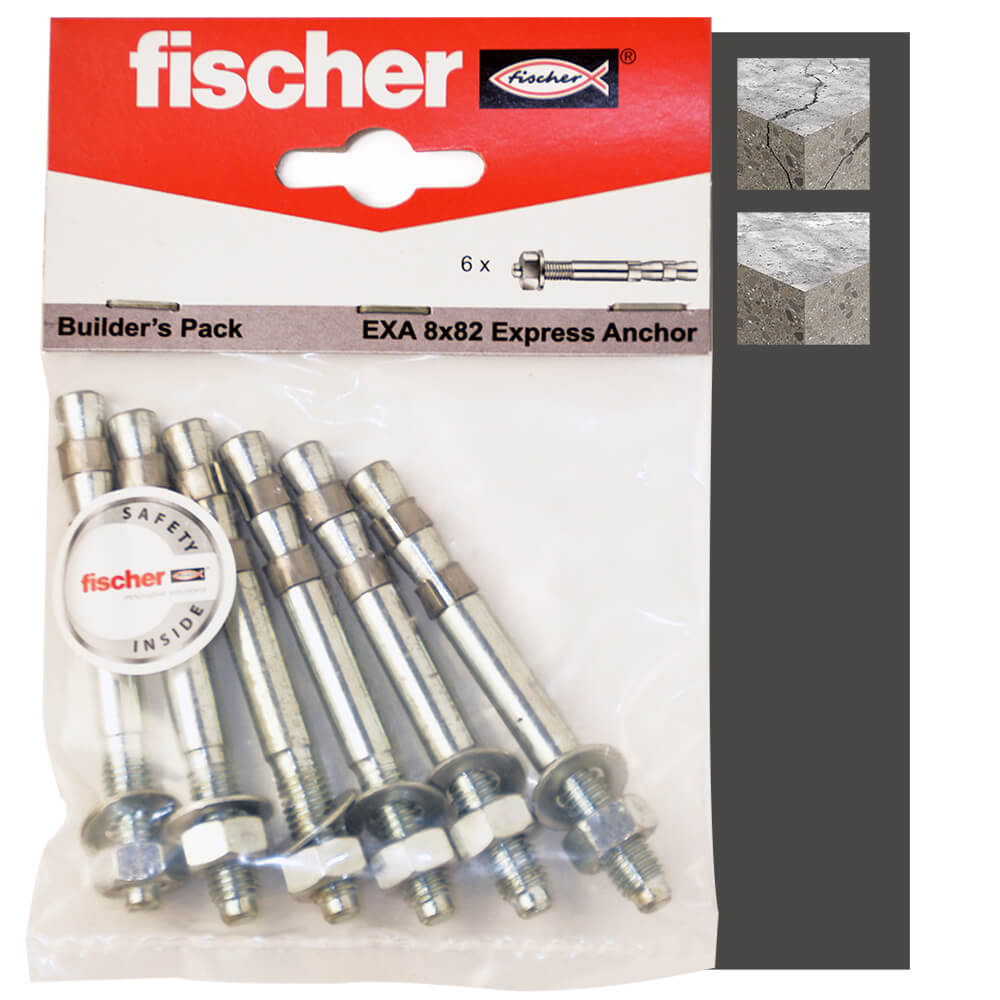
Concrete is known for its high strength, making it ideal for applications where extreme durability is required. fischer’s fixings designed for concrete are also built to handle high loads. These fixings should only be used in concrete, as they could damage other materials or cause lower strength building materials to break under the weight of the load. The EXA Express Anchor, produced by Upat for over three decades in South Africa, is a tried-and-tested mechanical anchor designed for critical fixing applications into concrete. Locally a very common application for the EXA Express Anchor is to fix Angle Iron onto concrete slabs in order to facilitate the construction of the masonry sections of a building.
Conclusion
Selecting the right fixing for your project is essential for a secure and reliable attachment. Fischer’s color-coded fixing system simplifies this process, ensuring that you choose the right fixing for your specific building material. Whether you’re working with concrete, masonry materials, board materials, or have an uncertain substrate, fischer’s range of fixings provides a solution for every situation, helping you achieve the best results in your construction and DIY projects.









